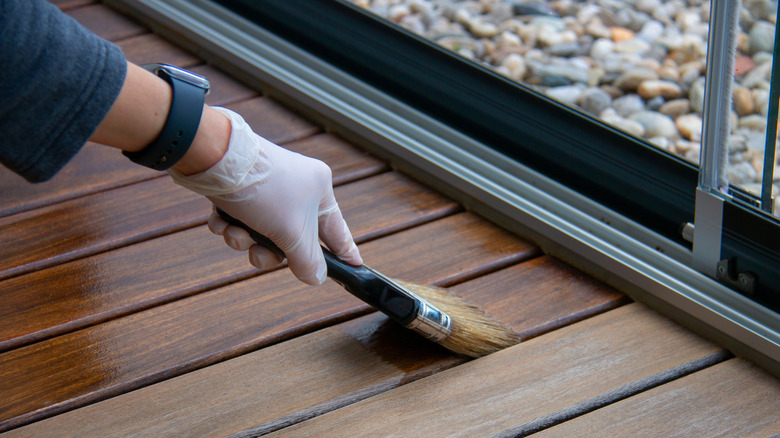Can You Stain Wood After Polyurethane Has Been Applied?
It's not a common practice, but you can apply stain — if it's gel stain — over polyurethane. It won't penetrate like stain, so you won't get the same grain patterns. Think of gel stain as a type of opaque paint. If you really want to change the color without stripping, gel stain can do it.
Gel stain contains urethane, which is the primary ingredient in polyurethane. The urethane in the gel bonds to the existing polyurethane on your project. Urethane is also used as the carrier for pigment. The pigment remains in the urethane after it dries.
Gel stain doesn't work with varnish, lacquer or shellac — only polyurethane. If it's an older finish, test it to make sure it's polyurethane. Dip a cotton ball in fingernail polish remover — acetone — and dab it on the finish. If it sticks to the finish it's varnish, shellac or lacquer, and you can't use gel stain on it. If it doesn't stick, it's polyurethane.
Stain Over Polyurethane
1. Clean First
Cleaning is paramount to good adhesion of gel stain. Dip a scouring pad into a 5-/50 solution of denatured alcohol and water. Scrub the surface to remove dirt, grime, wax or any other contaminate from the wood. Allow it to dry for two hours.
2. Sand Lightly
Sand the surface lightly by hand with 400-grit sandpaper. This serves to rough up the surface, allowing the gel stain to stick to it better. Wipe off the residue with a dampened rag and allow it to dry.
3. Apply the Gel
Apply the gel stain to the wood with a soft cloth. Provide a consistent, even coat by continuously folding the cloth, using a dry portion of it for each pass.
4. Air Time
Allow the gel stain to dry for at least 24 hours, 48 hours is best. If the stain isn't covering well, or it's too light, repeat adding another coat of stain. Follow up with another coat of polyurethane.
Tip: Drag a paint brush over the surface of the wet stain to add faux grain patterns if desired.
Other things to keep in mind
Gel stains can be used in different ways. Don't be afraid to experiment. It's advisable to run some tests on an inconspicuous area or a piece of scrap wood beforehand to ensure that the effect is what you're looking for.
Polyurethane works fine on unstained, natural wood. Sanding it beforehand with 120-grit sandpaper is sufficient. For a glassier finish, sand it with progressively finer grits up to 220-grit. Some woodworkers go with even higher grits, but it's not necessary, and can result in the closing off of wood pores, making polyurethane less effective.
